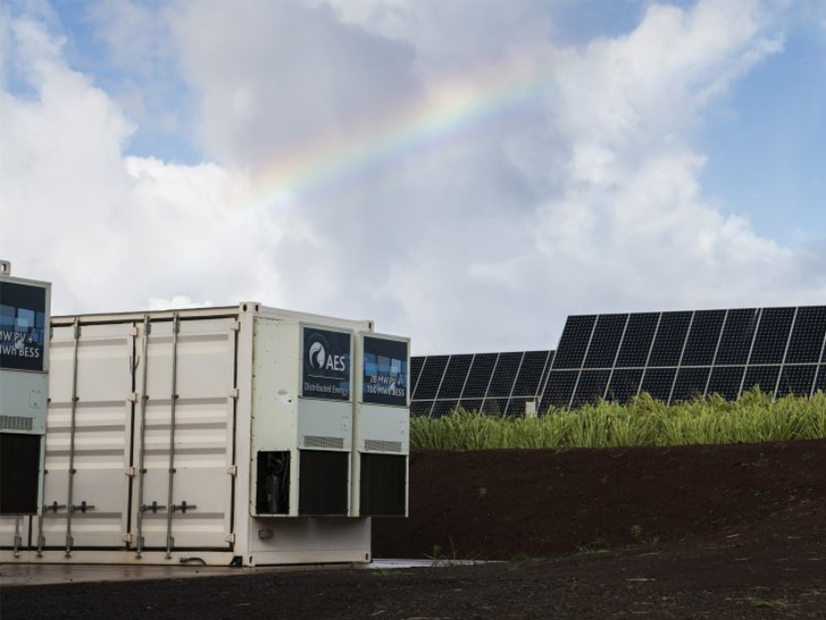The wide variety of grid interconnection rules that exist across jurisdictions is challenging developers in the proliferating market for hybridized generation and storage.
Interconnection rules for front-of-the-meter, grid-scale projects are “different in every region,” Evan Bierman, director of energy storage product management at EDF Renewables, said during the virtual segment of the Energy Storage Association’s annual conference Thursday. “Every ISO has its own set of rules and its own set of market options.” And bringing those rules together under one umbrella with a hybrid project further complicates the developer’s job.
Grid operators are seeing hybrid energy projects growing quickly as a percentage of their interconnection queues. The projects, which pair generation resources with storage technologies, are making renewables dispatchable, and industry experts believe they are central to decarbonization efforts.
Bidding hybrid resources in energy markets, however, is difficult, Bierman said. “You have a solar attribute that is changing, and you have a storage attribute that can do a lot of things, and then you have to tie in the interconnection rules to really optimize the plan.” The industry, he said, is “struggling” to solve that puzzle.
Study requirements associated with the interconnection of hybrid projects also are creating difficulties for developers of new projects, said Mike Bowman, CTO of General Electric’s renewable hybrids segment.
“There are a lot of modeling studies that happen [with interconnecting], which has always happened with power plants,” Bowman said. “But now you bring in multiple generators, storage and bidirectional energy flows, and it turns into a whole new area.”
He said that the challenges associated with modeling are not necessarily a barrier to entry for hybrid projects, but developers are in a steep learning curve right now. Model types and modeling requirements are as disparate by region as interconnection rules, Bowman said, adding that working with the disparity is “time consuming.”
Hybrid projects are now growing beyond just a generation resource and a storage asset, according to Bierman. EDF, he said, is working on projects that include behind-the-meter resources, front-of-meter solar and storage, and electric vehicle charging.
“We have to balance the behind-the-meter load, and then project out what the solar is going to do, what that load is going to do, and add [EV] battery chargers on top,” he said.
Ensuring that the software for hybrid projects can handle the attributes of every type of generator and load is one of the most challenging issues EDF is addressing, according to Bierman.
“It’s a huge growth area that I think is very, very difficult,” he said. “But when you get the challenge right, [electric vehicles and behind the meter solar and storage] can all work together.”
More Education Needed
Developers with advanced knowledge of hybrid projects see a lot of interest in these resources, but very few people really understand how they work, according to Bowman. That is a hurdle that developers need to address as an industry, he said.
“There is an openness to discussion and learning about hybrid storage,” he said, adding that the amount of education that needs to be done for projects to succeed is “significant.”
Frank Jacob, technology manager for energy storage at Black & Veatch, agrees with Bowman. He said that front-end education is critical to project start-up.
“Half of [the U.S.] is still uneducated about all the benefits of energy storage,” he said. Knowledge centers have built up on the coasts, but Jacob said engineers from companies in the Midwest are approaching Black & Veatch just to find out what storage is, where it should be sited and how they can make money with it.
The industry needs to broaden its education efforts so stakeholders understand that storage “isn’t just a dream solution; it’s a competitive solution today,” he said.



